Surf Fishing With Clams: A How To Guide

Using Clams For Surf Fishing Bait
There are a number of really good baits to choose from when it comes to fishing at the beach. Of all the baits used for surf fishing, clams may be the next best bait for surf fishing after sand crabs. In this article, we’ll be breaking down everything you need to know about using clams for surf fishing bait.
If you’ve followed me long enough, you’d know that if I’m fishing for surfperch, corbina, croaker or any of the like, I will fish a Carolina rig and use sand crabs for bait when I can. If sand crabs are unavailable (winter months), I’ll use mussel meat.
Why don’t I use clams? Well, I do. Whenever I come across a legal pismo clam during the legal time window, you bet, I’m using it. Of the times I’ve been able to use pismo clams for bait, they are a very reliable bait. Potentially even better than sand crabs.
I just don’t go out of my way to find them or buy them as sand crabs are just to easy to find and too productive to justify using clams all the time.
If you aren’t familiar with using sand crabs for surf fishing bait, be sure to check out the linked article. Sand crabs are readily available between the months of April and October.
What Kind of Clams for Surf Fishing Bait?
The most common type of clam used by anglers on the west coast is called the Pismo clam. In the world of clams, Pismo clams are categorized as “bivalves”, meaning they have two siphons and a two-halved shell.
These clams use their digging foot to bury themselves a few inches beneath the wet sand. Through their intake valve, they draw seawater into their bodies to capture diatoms, algae, and plankton.
Facts About the Pismo Clam
Size and Structure
Pismo clams are one of the largest species of clams found in California. They are bivalves, which means they have two siphons and a two-halved shell.
The largest recorded Pismo clam was found at Pismo Beach in California, measuring 7.37 inches across and estimated to be 26 years old.
Population Dynamics
Pismo clam populations are subject to significant fluctuations due to various natural factors. Clammers and sea otters are the main predators of Pismo clams.
Growth Rate
Pismo clams typically require around 5 years to reach legal size (4.5 inches), with their growth averaging about 3/4 inch annually. As clams near the age of 10, their growth rate slows significantly, with an increase of no more than 1/8 inch per year being common.
Filtering Capacity
A 3-inch clam filters an average of 5,800 gallons of water annually, extracting only about 3.88 ounces of food.
What Can You Catch Using Clams for Bait?

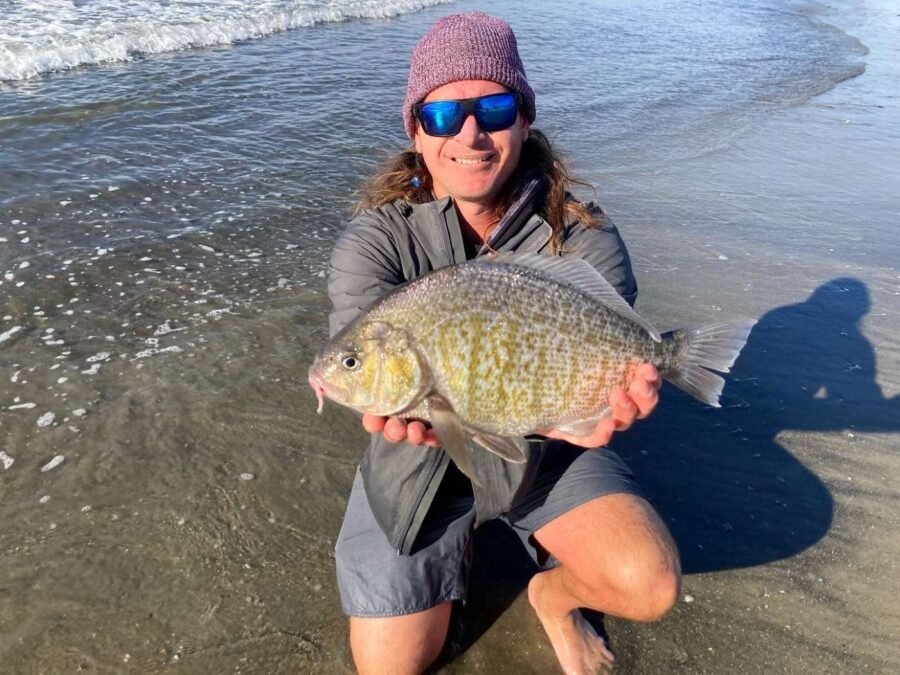
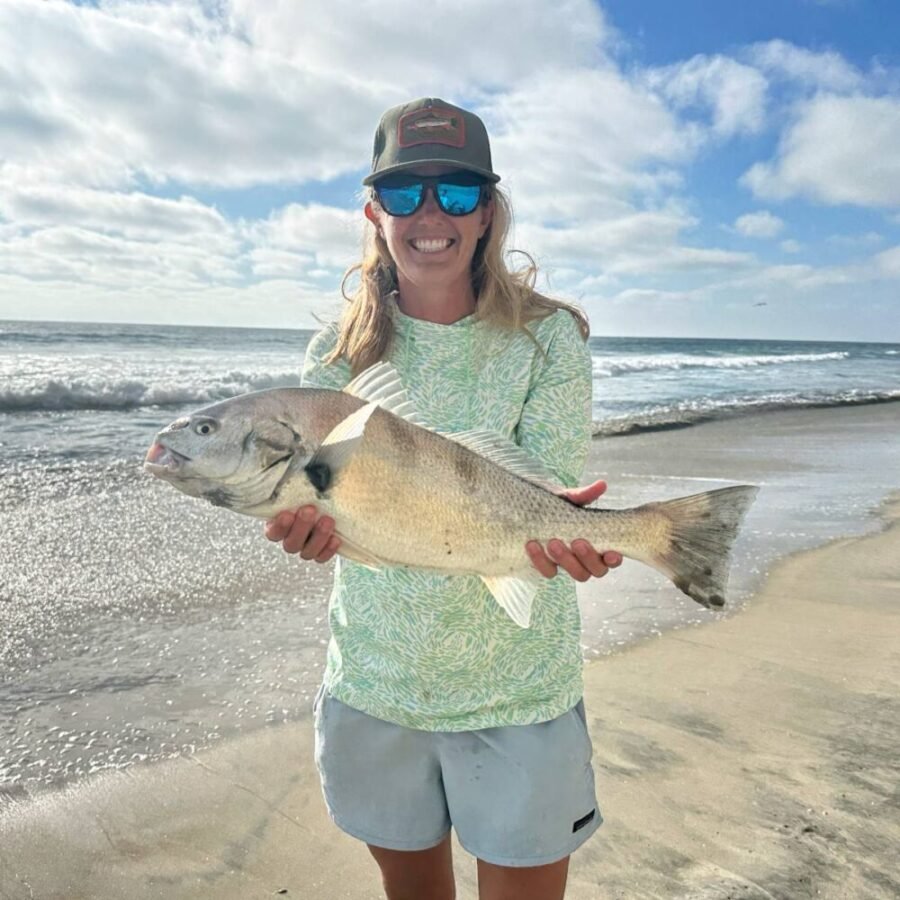
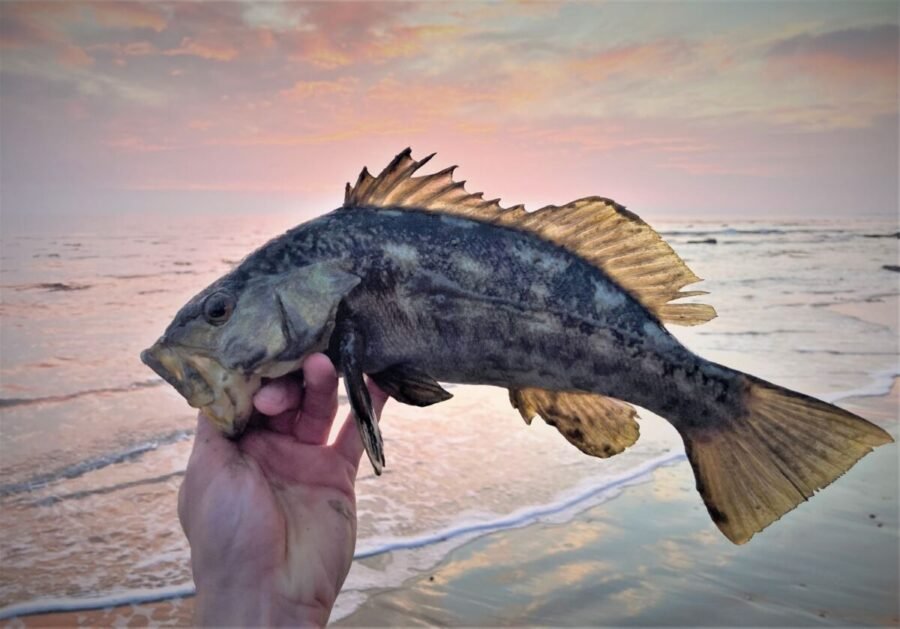

Surf fishing with clams is very comparable to surf fishing with mussel meat. You can catch you quite the variety. Some common catches include barred surfperch, walleye surfperch, black surfperch, yellowfin croaker, spotfin croaker, corbina, calico bass along with a handful more.
Like mussel meat, you’ll actually find that by using clams (and mussel meat) as bait, you’ll decrease the number of rays you catch in comparison to using sand crabs or other baits – especially squid.
Check out the photos above of some common species that will eat clams.
Where To Find Clams
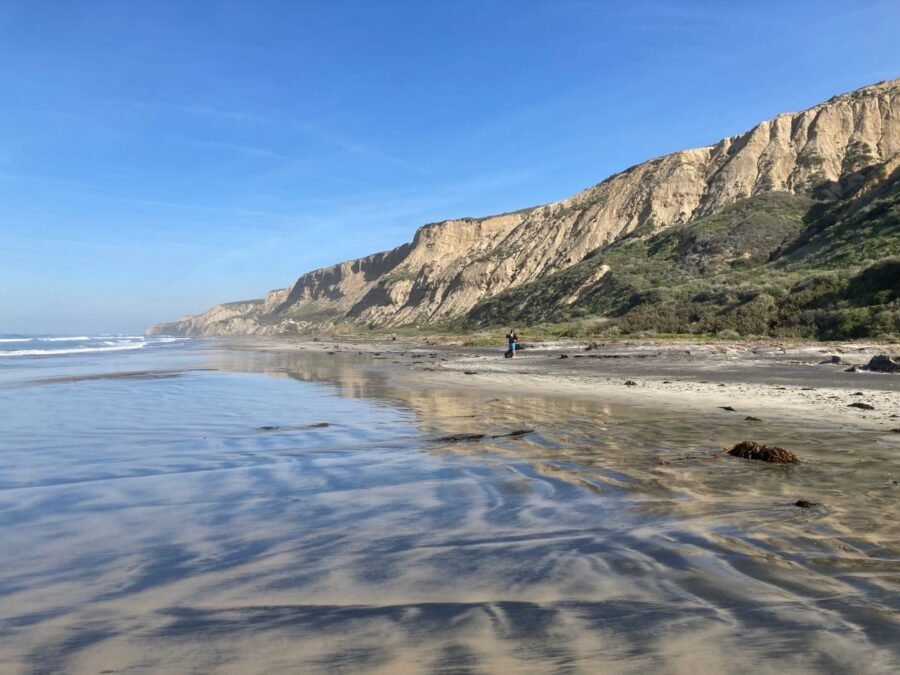
Pismo clams (and other clams like the Pacific razor clam) can be found along most of our sandy beaches here in California. Although they can be found at any tide, the most effective method is to arrive at a very low tide and use a clamming rake to poke into the wet sand as you feel around for them.
Regulations for Taking Pismo Clams
- Clammers must possess a valid fishing license and an accurate (rigid) measuring device.
- Pismo clams must measure at least 4 1/2″ in length to be possessed.
- Undersized Pismo clams must be immediately reburied, two inches deep, in the area where dug.
- Bag limit is 10 Pismo clams.
- Hours of clamming are 1/2 hour before sunrise to 1/2 hour after sunset.
The Pacific Razor Clam can be taken at all times during the year, with a valid fishing license. There is a limit of 20 clams per person.
How To Use Clams for Surf Fishing Bait
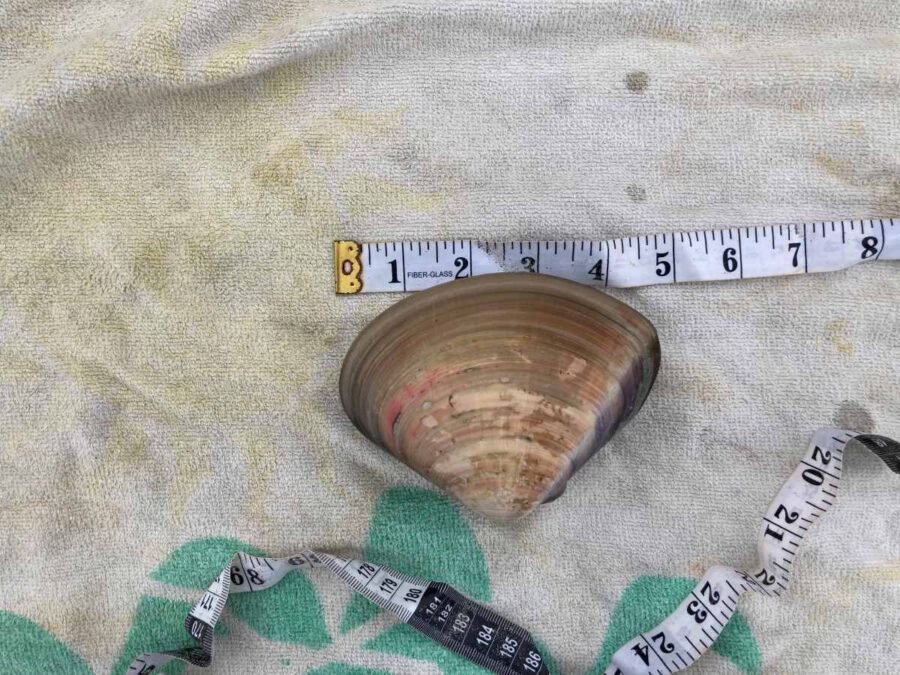
Surf fishing with clams is very similar to surf fishing with baits like mussel meat and sand crabs. A legal pismo clam (4.5 inches) should provide plenty of bait for maybe 10-15 hooks worth. Just pop the clam open with knife, cut out the meat and cut it into small pieces the size of a sand crab. Then use them as you would a sand crab or mussel meat on a Carolina rig. See below for the set-up I use.
Best Rig, Rod and Reel for Surf Fishing with Clams
As mentioned earlier, when surf fishing with clams for bait, I utilize my traditional light tackle rod, reel and rigs. Treat it as though you would treat surf fishing with sand crabs. Check the “light tackle” drop-down section below for my exact set-up.
Light Tackle Gear
- Rod: Okuma Celilo (8’6″ MA) or the Okuma SST (8’6″ MA)
- Reel: Penn Battle II or III 4000 series
- Mainline: 15-pound monofilament
- For Bait: Carolina Rig:
- Leader Line: 15-pound fluorocarbon
- Swivels: 15-19mm barrel swivels
- Hooks: size #2 or #4 owner mosquito hooks
- Weights: 1-oz egg weight
- Beads: 8mm fishing beads
Swim Bait Gear
- Rod: Okuma SST-S-902HA – 1/2-2oz | 10-30lb | 9ft | H | MF
- Reel: Penn Spinfisher VI (3500 or 4500)
- Main Line: 30-pound braid
- Leader Line: 30-pound mono
- Lure Options:
Jerk Bait Gear
- Rod: Okuma SST (8’6″ MHA)
- Reel: Penn Battle II or III 4000 series
- Main Line:
- Leader Line: 15-pound fluorocarbon
- Lures: Lucky Craft FM 110 and Shimano WM 115 SP
Shark Gear
- Rod: Fiblink Moonsniper (12 or 13 feet)
- Reel: Penn Battle 8000 (II or III)
- Main Line: 50-pound braid
- Topshot: 100-pound nylon coated mono
- Leaders: Shark Leaders
- Weights: 8-ounce pyramid or 6-ounce sputnik
As always, let me know if you guys have any questions and good luck out there!
which part of the clam. Video showing how to shuck and what part of the clam to use.
Hey there. I’m not sure what video you’re referring to. I provided no video so it’s likely an ad displaying. When you cut the meat, just evenly divide the meat and create sand crab sized portions of the meat. Hook through the meat as central as you can in a firm area and you’re good to go. It will be a tad more hardy than mussels but certainly more delicate than sand crabs
Sometimes I come across thousands of baby clams can I use that for bait or is that illegal and how can I do that
Been watching your videos for a few years might have passed you by at one time
I want to say you’re most likely referring to bean clams. I see those all over as well. I also often find them in the stomaches of Spotfin croaker. But I have not figured out how you might use those for bait other than mashing a handful of them and hooking the meat.
I also have yet to check regulations on those.